A complete protein is a food that contains all nine amino acids that your body can’t produce.
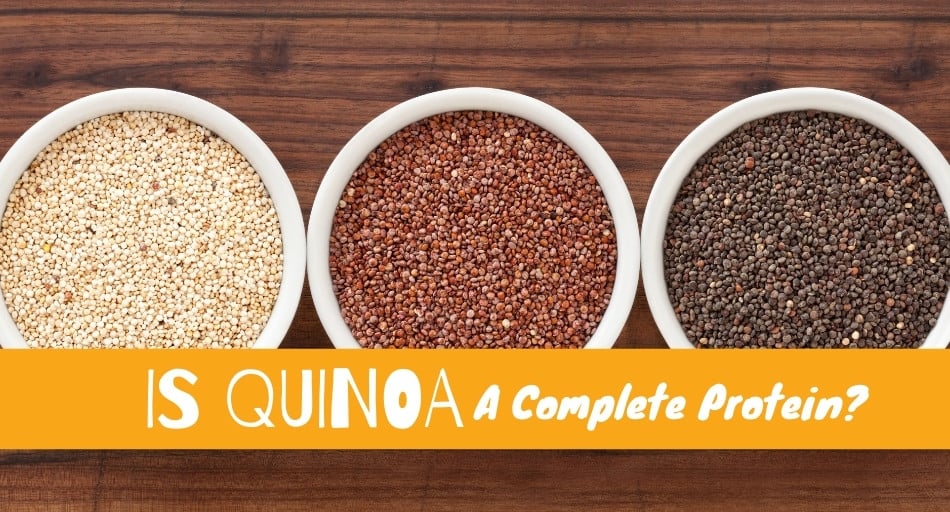
Most animal products are great sources of these amino acids, which makes them complete proteins.
If you’re following a plant-based diet, you know how difficult it can be to find foods containing these nine amino acids in adequate amounts.
For example, quinoa is a great food choice for people on vegan diets, and it also contains a lot of protein. But is it a complete protein?
Table of Contents
Is quinoa a complete protein?
Quinoa is a complete protein, which means that it contains all nine essential amino acids that your body can’t produce on its own. Because of that, eating quinoa can provide you with much more value from the protein it contains than other plant-based foods.
What’s more, quinoa is rich in various vitamins and minerals, making it an even better food for every diet. It’s also a great source of fiber, which is an important nutrient for the health of your digestive system.
Why is quinoa a complete protein?
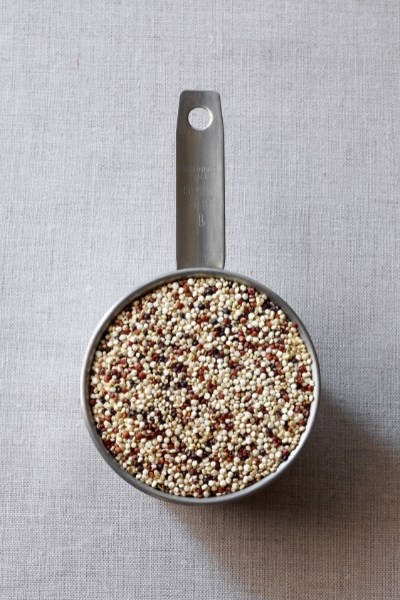
Quinoa contains enough of each of the nine essential amino acids that your body cannot produce. When food has these essential amino acids in adequate amounts, it’s considered a complete protein.
This kind of protein is important for good health, as it’s absorbed much better by your body.
Because of that, it’s a good idea to include foods that are considered complete proteins in your diet as much as possible.
On the other hand, some experts argue that quinoa contains low amounts of some amino acids like lysine.
They say that quinoa should be considered a “nearly complete” protein instead.
Either way, quinoa is a wonderful plant-based source of protein regardless of whether it’s complete or not.
Is quinoa good for you?
Quinoa is a highly nutritious whole grain. A one-cup serving of cooked quinoa provides you with 16% of your daily recommended need for protein.
Aside from the essential amino acids, the protein found in quinoa can help duel your muscles and prevent overeating.
Because of that, regularly eating quinoa can help you with weight loss and weight management.
Eating quinoa is also a great way to load up on fiber. The same serving provides 5.2 g of fiber, which is quite an impressive number.
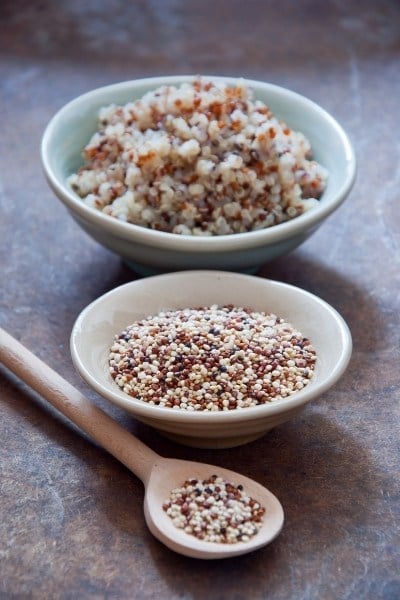
Fiber is not only crucial for the health of your digestive system, but it can also help soak up excess stomach acid, preventing heartburn and other acid reflux symptoms.
Just like most other whole grains, quinoa is a great source of several minerals, including manganese, magnesium, phosphorus, and iron.
All of these are important for various bodily functions as well as the health of your bones, heart, and cardiovascular system.
Mineral deficiencies are quite common in the age of processed foods. So, adding whole grains like quinoa to your diet can help prevent these.
Quinoa is also rich in powerful antioxidants and anti-inflammatory plant compounds. These help flush out free radicals from your body, preventing oxidative damage to your cells.
Because of that, you’re at a lower risk of heart disease, diabetes, and even cancer.
Anti-inflammatory compounds you get from quinoa also reduce overall inflammation in your body, which can improve various preexisting conditions like diabetes, IBS, or even acid reflux.
What’s more, some studies show that eating quinoa can help with blood sugar regulation and overall feeling of fullness after eating.
Spikes in blood sugar levels can make you feel bad after eating and can even lead to diabetes over time.
So, make sure you choose foods with a low glycemic index to avoid that.
Quinoa is also perfect for people who suffer from gluten intolerance or celiac disease. If you suffer from any of these conditions, your body isn’t able to metabolize gluten properly. So, it’s important to choose gluten-free foods and products like quinoa.
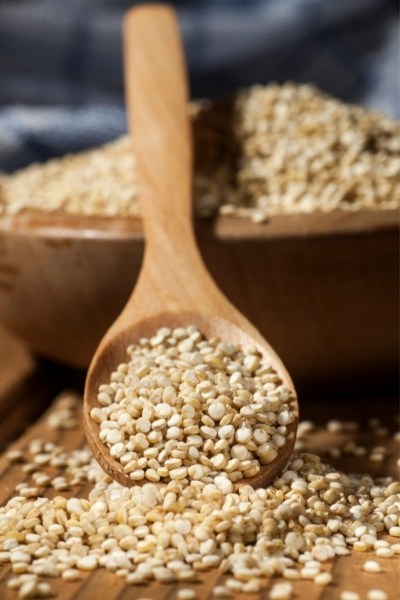
While quinoa is mostly beneficial to your health, it does contain antinutrients. This group of substances binds with nutrients like iron and magnesium, preventing their absorption.
While this might seem bad, people who follow healthy, balanced diets shouldn’t worry too much about antinutrients.
If you are concerned, though, try soaking quinoa before cooking it to reduce the content of antinutrients in the finished product.
How can you get the most out of the protein in quinoa?
Even though quinoa is a complete protein, there are still ways you can make this whole grain an even better source of amino acids.
The first tip; try eating your quinoa with some source of healthy fats like avocados, fatty fish, or beef.
These will help complete quinoa and provide you with even more protein and amino acids.
The amino acid that quinoa lacks a bit is lysine, and it’s found in red meat and sardines, which means that they pair well with this grain.
So, when you consume quinoa with red meat or this type of fish, you’re completing the protein even more.
Additionally, there are various types of quinoas, depending on when it’s grown and manufactured.
These also have different amounts of essential amino acids. So, keep that in mind when shopping for quinoa.
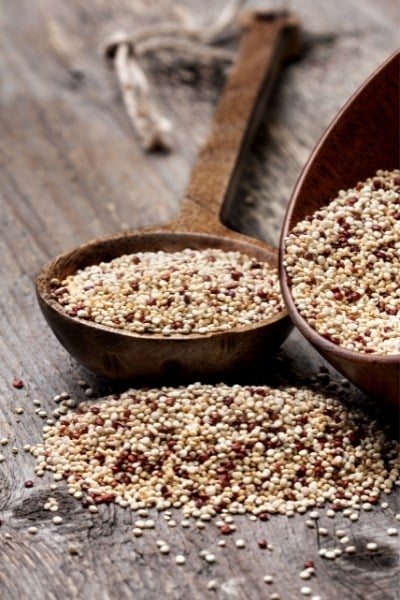
Since quinoa can have different amino acids, it’s best to consume it with other sources of protein to ensure that you’re getting the nutrition your body needs.
Quinoa is especially good for people who follow plant-based diets. This is because most complete protein sources come from animal products. So, those who don’t eat meat might be deficient in the protein and amino acids that are found in them.
Conclusion
Quinoa is a complete protein, which makes it a great food for vegans and vegetarians. It provides you with a lot of protein in a single serving as well as a lot of important minerals and vitamins.
This grain is also high in plant compounds and antioxidants, so eating it can prevent various health conditions.
Because of that, quinoa is often labeled as one of the best foods to eat on a healthy, balanced diet.
Sources: Harvard School of Public Health, Nutrition Data, PMC, and National Library of Medicine
